Interview with Dartmoor’s Daughter
Talking Wild with Dartmoor’s Daughter
Sweeping across 368 square and untamed miles, the wilds of Dartmoor remain one of the UK’s most celebrated landscapes. From its rushing rivers and ancient woodlands to its dramatic tors and heather-bound plains, this stunning national park continues to captivate and inspire all those who follow its weaving trails.
One such rover is Emma Cunis, founder of Dartmoor’s Daughter, an outdoor pursuits collaborative with a holistic approach to guided walking. Emma regularly leads groups around these enchanting uplands, but as she explains, her role goes far beyond that of chaperone.
We were lucky enough to catch up with Emma to find out more about her venture and her own journey back to health and wellbeing.
Could you introduce us to Dartmoor’s Daughter?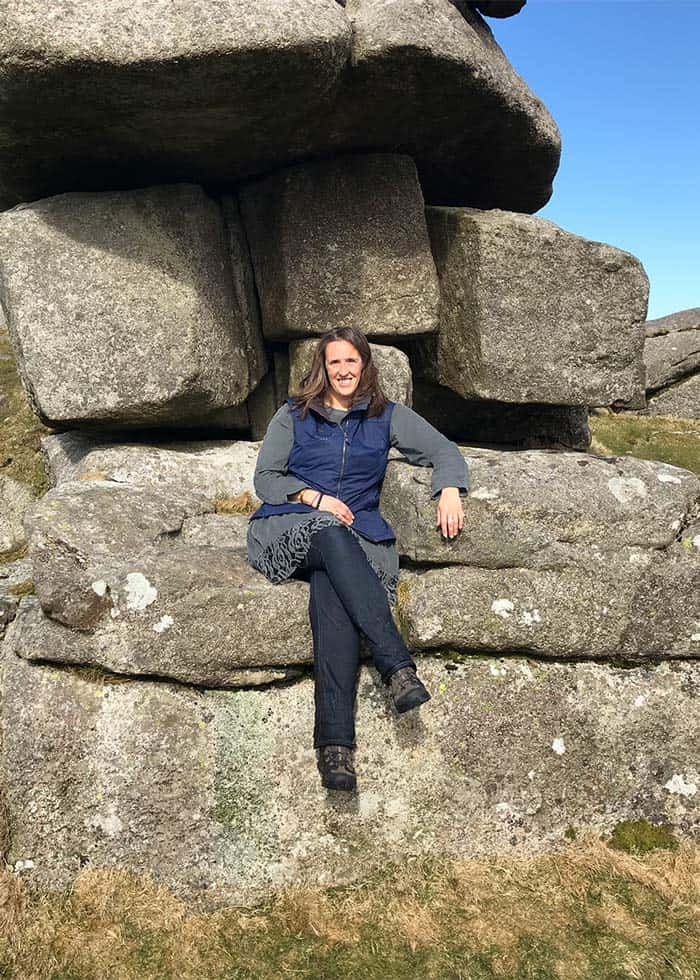
Dartmoor’s Daughter creates walks and nature-connection experiences to help locals and visitors to explore, learn and enjoy. We offer bespoke walks tailored to an individual or group’s interests and abilities. We also offer publicly scheduled themed walks focusing on archaeology, astronomy, farming, bird song, sacred sites, navigation training, dowsing, wild foods, wild swimming, industrial history, nature treasure hunts, letterboxing, and much more.
Your role goes far beyond that of walking guide. How would you best describe it?
I describe myself as a walking guide, nature-connection facilitator, and health and life coach. I have also been called an ecotherapist, storyteller, historian, pathfinder, edgewalker and hedgewitch.
Having experienced ill health towards the end of a thrilling but stressful 20- year global corporate career, I feel passionately about sharing possibilities with others, allowing them to discover greater physical health, mental wellbeing and spiritual connections. When creating walks and nature-connection experiences, I invite people (myself included) to reconnect with their bodies, their communities, and the landscape which sustains them. My aim is to encourage people to become happier, healthier, and feel inspired to care for our natural world.
Can you put into words your feelings towards Dartmoor and tell us about the impact it has had on your life?
I have a deep connection with this extraordinary, ancient, and beautiful landscape. My maternal family have lived on, and adored, Dartmoor for generations. My grandfather was a Dartmoor guide and author, so I grew up with a passion for walking and a curiosity about nature. I have fond childhood memories of my brother and I clambering up tors, swimming in copper-gold coloured rivers, and building camps in the woods with friends. On returning home to Devon after an executive career which took me to cities all over the world, my appreciation for Dartmoor intensified as did my fascination with its history, culture and way of life.
Why is the wilderness so important for our wellbeing?
Multiple studies demonstrate the importance of our relationship with the natural world and its positive impact on our mental and physical wellbeing, and yet we are more divorced from it than ever before.
There are very few places left in Britain where it’s possible to feel the freedom of a vast and untamed space. Whilst Dartmoor is a living, working landscape, it is also awe-inspiring in its beauty, traditions and history. To be able to sit on top of a majestic granite tor and see for miles across to the horizon offers a sense of peacefulness and humility. To walk for hours and not see another soul can be such a relief in our crowded world. To sit inside a stone circle, built thousands of years ago, offers a sense of curiosity and wonder. To swim in a beautiful river evokes feelings of delight and gratitude. No matter how I feel before heading out, I always return feeling happier, healthier, calmer, and with a sense of appreciation.
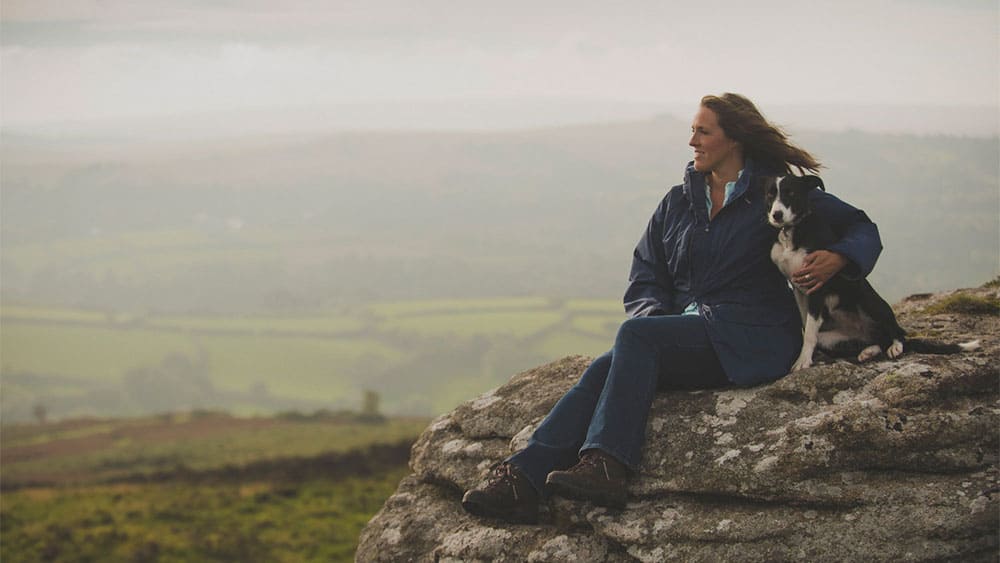
Do the transformative powers of nature continue to surprise you?
Always. It’s so easy to get caught up in our day-to-day worries and feel over-whelmed by the pace of a modern world which values achievement and activity over rest and wellbeing. Every time I walk on ancient tracks, sit with my back against a tree or lie down in a meadow, I am reminded of my place in the world, a tiny part of something intricate and vast. Walking in nature played a significant part in transforming my own wellbeing after being diagnosed with ME/CFS many years ago. Nature continues to help me on my journey back to health.
Dartmoor is riddled by myths and legends, so does being an accomplished storyteller go with the territory?
Yes, although I didn’t realise that I would need to hone my storytelling skills when I started offering guided walks. Often, it’s the names of places on Dartmoor which help reveal the stories behind them. I receive great joy from being part of the great oral tradition and sharing Dartmoor’s many myths and legends including tales of ghosts, witches, piskies, hounds, giants, tin-miners and the devil himself.
The Dartmoor Beast. Fact or Fiction?
Fact – of course!
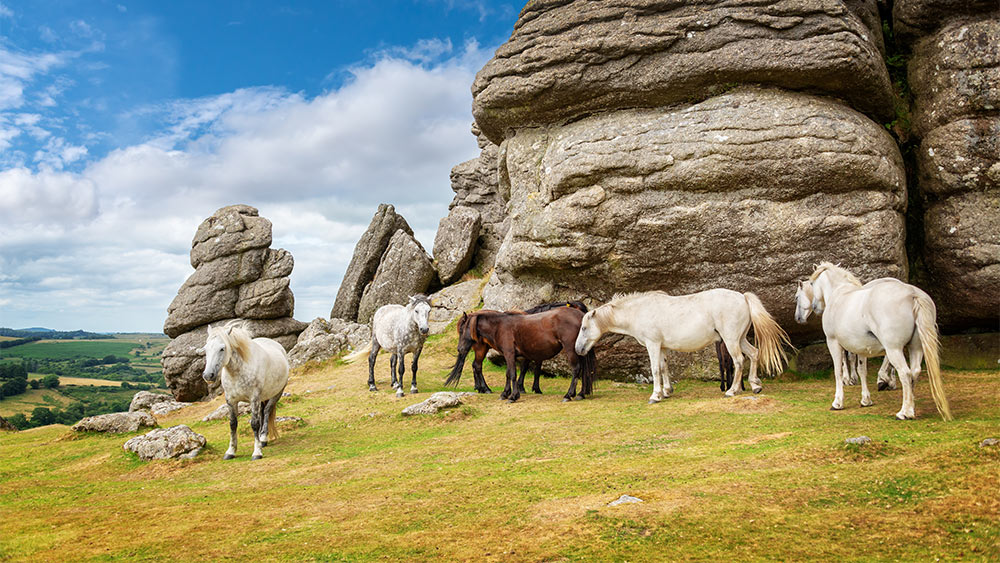
Are Dartmoor’s many customs and traditions still alive and well?
They are alive and well in some rural and farming communities, but I fear they may become lost to younger generations, some of whom don’t want to live and farm as their parents did.
To get a real sense of Dartmoor’s traditions and customs, it’s well worth visiting some of the agricultural fairs, folk evenings, storytelling events, craft exhibitions, and artists’ studios, or you could cross the threshold of a moorland pub and get chatting to the locals – they love to tell interested folk a story or two.
Are there any tors or enclaves you’ve yet to explore?
There are several stunning tors and areas in private ownership that I haven’t yet asked permission to explore. They’re on my to-do list!
What sets Dartmoor apart from other national parks in the UK?
Our national parks are all stunning, but Dartmoor offers a unique quality with its rugged beauty and awe-inspiring aspects. It has fascinating prehistoric archaeology including a multitude of sacred sites, plus a rich folkloric tradition existing within a living, working landscape.
Are we seeing a change in people’s attitudes towards walking holidays, a move away from those slightly starchy stereotypes?
I’ve never been on a “walking holiday” so I don’t know. What I do know is that the people who come to walk with me are from a range of backgrounds and abilities. I often welcome seasoned hikers wanting a challenging walk deep into the moor, then there are those who seek something more gentle and the opportunity to immerse themselves in Dartmoor’s beauty and history, and some people come to me looking for a more meaningful experience and the chance to connect with the landscape and its sacred sites.
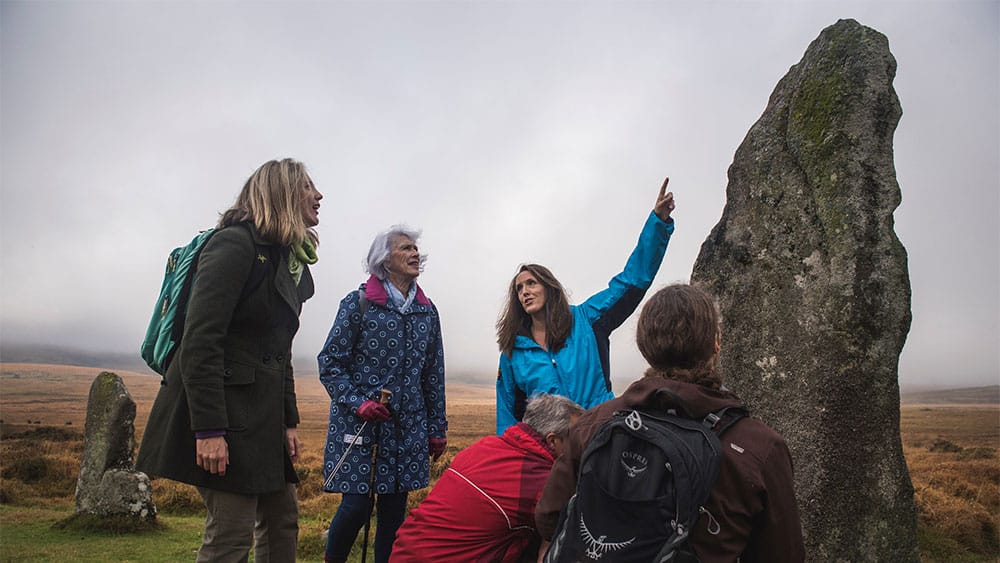
Could you describe the last time the rugged beauty of Dartmoor took your breath away?
This morning! We were walking along the magnificent Belstone range of tors and the panoramic views towards Exmoor, Cornwall, and the heart of the moor were stunning as the shadows of the clouds raced across the hills ahead of us.
Nothing beats a pub lunch after a walk on the moor. Have you got a favourite haunt?
There are many great pubs here on Dartmoor – some are best-known for their food and others for their friendly welcome. I don’t think I could name a favourite without upsetting the others.
Is there a part of Dartmoor that remains particularly special to you?
I love all of Dartmoor, yet it is the northeast corner that has captured my heart the most as it’s where I grew up. It attracts less visitors than the south moor and therefore feels more remote. There’s also an abundance of prehistoric monuments and traditional farmsteads which add to its allure.
What’s top of your Dartmoor essential reading list?
I am biased as my ‘go-to’ reference book is always ‘High Dartmoor – Land and People’ written by my grandfather, Eric Hemery, one of several that he wrote about the moor. William Crossing, RH Worth, Dr Tom Greeves, Jeremy Butler, and Phil Newman have all written some excellent accounts. I also recommend ‘The Witchcraft and Folklore of Dartmoor’ by Ruth St.Leger-Gordon which is a fascinating read. More contemporary text can be found by visiting the Legendary Dartmoor website managed by Tim Sandles which is comprehensive and well-researched.
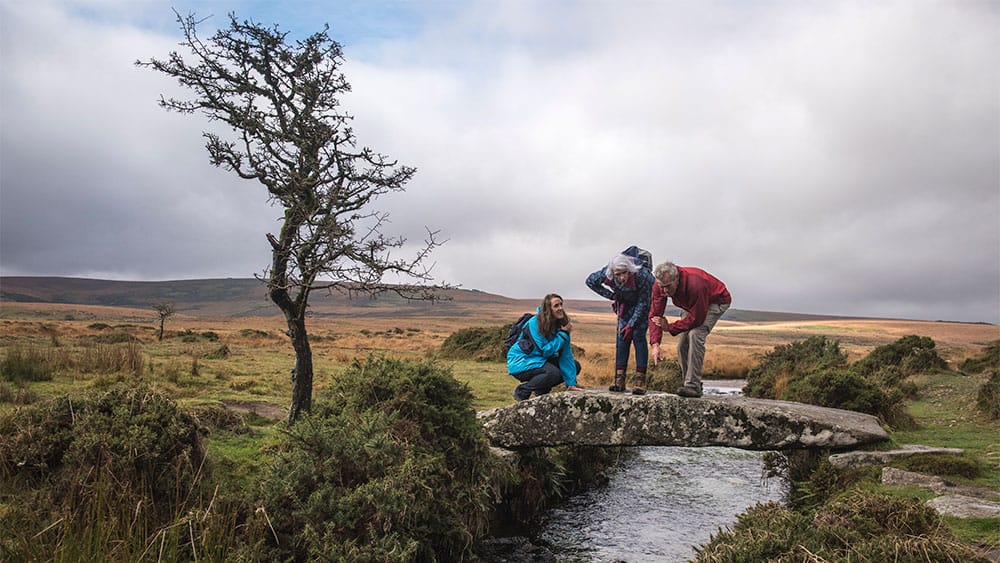
What should all moorland hikers carry in their rucksacks?
Water, healthy snacks, a warm layer, sunscreen, waterproofs (Dartmoor weather is extremely changeable and forecasts are not guaranteed), a mobile phone for emergencies (sign up to www.emergencysms.net and add Dartmoor Livestock Protection Society to your contacts list in case you need to report injured livestock), an OL28 Ordnance Survey map of Dartmoor and a compass. If you don’t know how to navigate, set up a GPS app (but don’t rely on it) on your smartphone. I also recommend downloading the what3words app which can pinpoint your location in case you lose your bearings or find yourself in need of help. It is also dutiful to carry an empty bag for any litter you might find, which sadly has become more of a problem.
What’s being done to help protect and preserve this precious landscape, and is it enough?
There are a few major landowners on Dartmoor such as the Duchy of Cornwall, the National Trust, the Forestry Commission, and South West Water, with smaller landowners owning the rest. Ninety percent of the moor is used for farming, so it will be interesting to see how the new Environmental Land Management scheme (ELM) develops to ‘protect’, ‘preserve’, and I would add ‘enhance’ this precious landscape.
Individuals, organisations, and government must think and act more boldly to ensure a future that allows Dartmoor to thrive as a living and working environment, and this requires careful balance and compromise between all stakeholders involved.
